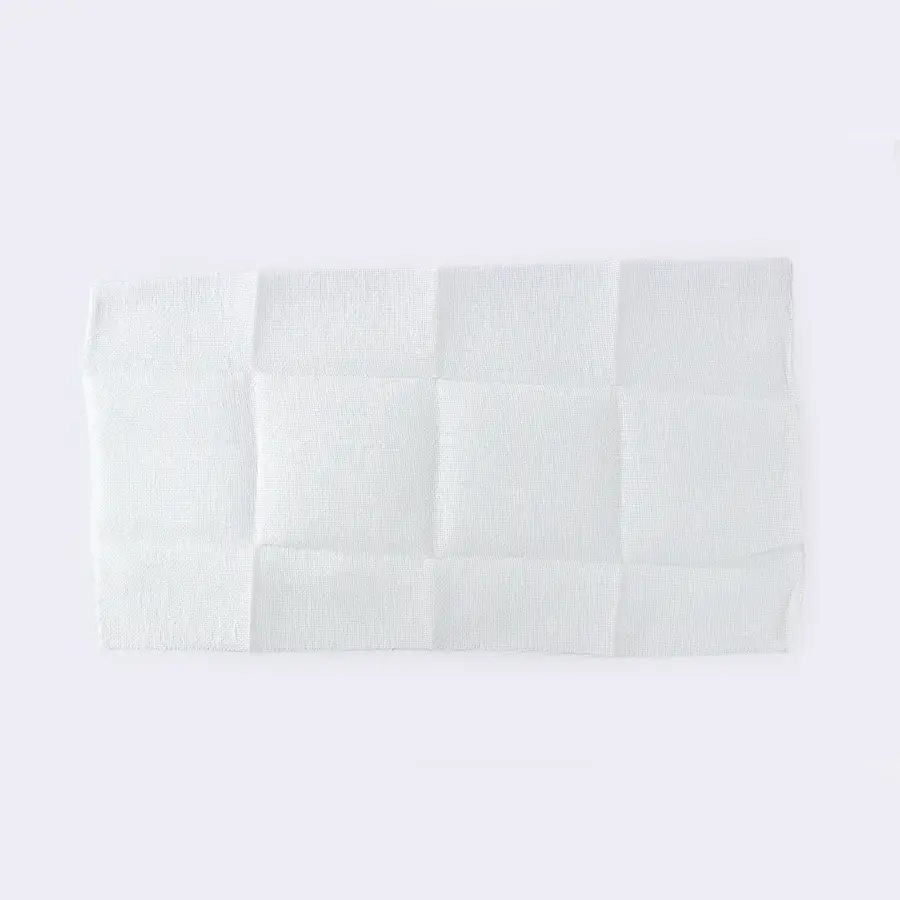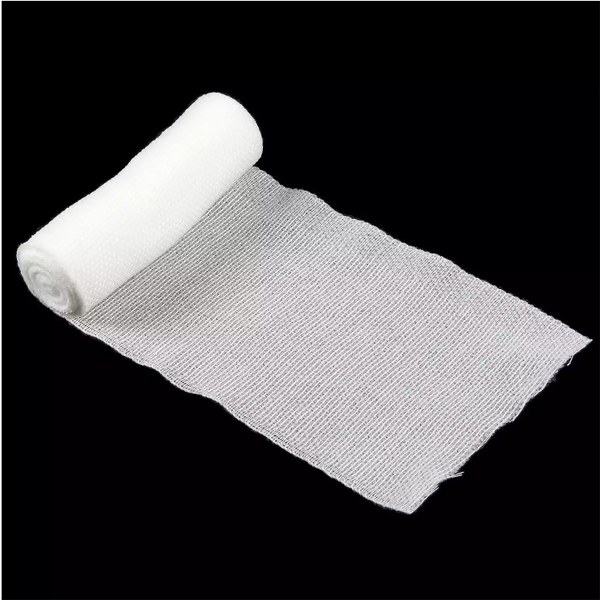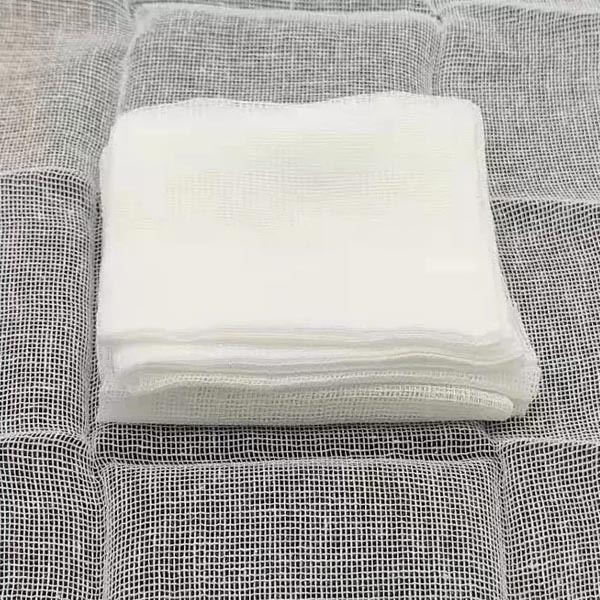This article explains everything you need to know about using gauze after wisdom tooth extraction. We’ll cover why gauze is a crucial part of the healing process, how long to keep gauze in place, when to change gauze, and the signs that tell you it’s time to stop using gauze. Reading this will empower you to manage your post-extraction recovery effectively and avoid complications, ensuring a smoother, faster healing experience. As Allen from ZhongXing, a medical device manufacturer in China, I’ve compiled information that mirrors the questions our clients, like hospital procurement managers, frequently ask.
Why Is Gauze Necessary After Wisdom Tooth Extraction?
After a wisdom tooth extraction, the role of gauze is critical. The primary function of gauze is to control bleeding and promote clot formation at the extraction site. When a tooth is extracted, it leaves behind an open socket in the bone. This socket will naturally bleed. Applying gauze with firm, consistent pressure helps to stem this bleed and encourages a blood clot to form.
This blood clot is essential to the healing process. It acts as a protective barrier over the underlying bone and nerves, shielding them from food particles, bacteria, and other irritants. This protection significantly reduces the risk of infection and a painful condition called dry socket, where the blood clot fails to form or becomes dislodged. At ZhongXing, we manufacture medical gauze that is highly absorbent and designed specifically for this purpose.
How Long Should I Keep Gauze in My Mouth After Extraction?
Your dentist will typically advise keeping the gauze in place for about 30 to 45 minutes after the extraction. This initial period is crucial for allowing a stable blood clot to form. It’s important to bite down firmly on the gauze during this time to ensure adequate pressure is applied to the extraction site. After this initial period, you may need to change the gauze if it becomes saturated with blood.
However, the exact amount of time you’ll need to keep using gauze varies. Some people experience minimal bleeding and may only need to use gauze for a few hours, while others might need to use gauze intermittently for up to 24 hours. Wisdom teeth removal often results in more bleeding than simpler extractions, so you might need to use gauze for a slightly longer period. It’s also about understanding when to stop using gauze after wisdom teeth extraction.
How Often Should I Change the Gauze?
You should change the gauze every 30 to 45 minutes, or as needed, if it becomes soaked with blood. To change gauze, gently remove the gauze from your mouth and replace it with a fresh gauze pad. Fold the gauze pad into a thick square that’s large enough to cover the extraction site completely. Then, bite down firmly on the new gauze.

It’s important not to change the gauze too frequently, as this can disrupt the forming blood clot at the extraction site and prolong the bleeding. The goal is to find a balance between maintaining a clean environment and allowing the clot at the extraction site to stabilize. Avoid excessive talking, spitting, or rinsing your mouth vigorously, as these actions can also dislodge the clot. Gauze helps immensely in this phase.
What Are the Signs That I Can Stop Using Gauze?
Knowing when to stop using gauze is just as important as knowing how to use it. You can typically stop using gauze when the bleeding has significantly subsided or stopped completely. To check your gauze pad, carefully remove it and observe the extraction site. If there’s only a small amount of pinkish saliva or a very small amount of blood on the gauze, and no active bleeding at the site, you can likely stop using gauze.
Another indicator is the formation of a firm blood clot. If you can see a dark, jelly-like clot in the socket, it’s a good sign that the healing process is progressing well. If you’re unsure whether it’s safe to stop using gauze, it’s always best to err on the side of caution and continue using it for a little longer, or contact your dentist for advice. Remember, understanding the signals from your body is key. Your dentist often explains when to stop using gauze.
Can Using Gauze for Too Long Cause Problems?
While gauze is essential for initial bleeding control, using gauze for too long can sometimes cause minor issues. Prolonged gauze use, especially if the gauze is not changed regularly, can create a moist environment that may, in rare cases, slightly increase the risk of infection, although this is uncommon. Leaving gauze on for more extended periods, the gauze may also stick to clot.
Another, more common issue is simply discomfort. Keeping gauze in your mouth for an extended period can be unpleasant and may interfere with eating and speaking. Also, some people may notice a bad taste in your mouth. That’s why it’s crucial to follow your dentist’s instructions and learn when to stop using gauze. It’s also about time to stop using.
What Happens if I Stop Using Gauze Too Soon?
Stopping gauze use prematurely, before a stable blood clot has formed, can lead to several problems. The most immediate consequence is continued bleeding. If the bleeding doesn’t stop, you’ll need to replace the gauze and keep applying pressure.
More significantly, prematurely removing the gauze increases the risk of dry socket. This painful condition occurs when the blood clot is dislodged or fails to form, exposing the underlying bone and nerves. Dry socket can delay the healing process and requires additional treatment from your dentist. This is why it’s so important to know when to stop using the gauze and not rush the process. Pay attention if your gauze when the bleeding continues.
Should I Sleep with Gauze After Tooth Extraction?
The question of whether to sleep with gauze after tooth extraction depends on the timing of your surgery and the amount of bleeding you’re experiencing. If your extraction was in the morning and the bleeding has stopped or significantly reduced by bedtime, you generally do not need to sleep with gauze.
However, if your surgery was later in the day, or if you’re still experiencing some bleeding, your dentist might advise you to sleep with gauze in place for the first night. If you do sleep with gauze, it’s crucial to ensure it’s positioned securely to prevent it from becoming a choking hazard. Consider changing the gauze every 30 minutes or as needed, even during sleep, if bleeding is substantial. Sleeping with gauze should be a conscious decision based on your specific situation.
How Do I Properly Use Gauze After Wisdom Tooth Extraction?
Proper gauze use is crucial for a smooth recovery. Here’s a step-by-step guide:
- Preparation: Wash your hands thoroughly before handling the gauze.
- Folding: Fold a piece of gauze into a thick, compact square or rectangle. It should be large enough to cover the entire extraction site.
- Placement: Carefully place it over the extraction site. Ensure the gauze is directly on the extraction site, not just resting on adjacent teeth.
- Pressure: Bite down firmly and consistently on the gauze. Maintain this pressure for the recommended 30 to 45 minutes. Avoid talking or moving your jaw excessively.
- Change: After 30 to 45 minutes for 1 hour after surgery, or if the gauze becomes saturated, gently remove it.
- Replacement: If bleeding continues, replace your gauze with a fresh one, repeating steps 2-4.
- Observation: Monitor the bleeding. If it reduces significantly or stops, you may stop using gauze.

Remember, gauze plays a vital role in the first few hours after extraction. Understanding gauze use and how gauze helps will make your recovery process much smoother.
What if I’m Still Bleeding Heavily After Several Hours?
If you’re experiencing heavy bleeding several hours after your tooth extraction, and you’re still bleeding a lot after changing the gauze several times, it’s important to contact your dentist immediately. Persistent, heavy bleeding could indicate a complication that requires professional attention.
While waiting to speak to your dentist, continue applying firm pressure with fresh gauze. You can also try biting down on a moistened tea bag. The tannic acid in tea can help promote clotting. Avoid rinsing your mouth with warm salt water or any other mouthwash until you’ve spoken to your dentist, as this could dislodge any forming clot. Gauze following a tooth extraction is key, but persistent bleeding needs professional care. Remember first gauze change.
How Does Gauze Promote Healing?
Gauze is not just a passive barrier; it actively contributes to the healing process in several ways:
- Bleeding Control: The primary way gauze promotes healing is by control bleeding and promote clot formation. The pressure applied by the gauze constricts blood vessels at the extraction site, slowing the bleed.
- Clot Formation: Gauze provides a framework for the blood clot to form. The fibers of the gauze act as a scaffold, trapping blood cells and platelets, which are essential for clotting. Clot formation at the extraction is crucial for recovery.
- Absorbent qualities : gauze is absorbent.
- Protection: The blood clot, stabilized by the gauze, protects the exposed bone and nerve endings from contamination and irritation. This protection is critical for preventing infection and dry socket.
- Moist Environment (Initially): In the very early stages of healing, the slightly moist environment created by the gauze can help prevent the extraction site from drying out too quickly, which can be beneficial for the initial stages of tissue repair. Gauze following extraction supports these processes.

Zhongxing, what products are used by hospitals?
As a factory with 7 production lines, Zhongxing, under my management, Allen, produces a wide array of medical consumables vital for post-operative care, like after a wisdom tooth extraction or other tooth extractions. These are extensively used by hospitals, clinics, and other healthcare providers in the USA, North America, Europe, and Australia. Our main customers are people like Mark Thompson.
Here’s a breakdown of our relevant products:
-
Medical Cotton & Cotton Balls: Used for cleaning wounds, applying antiseptics, and absorbing fluids. Our cotton is made from high-quality, medical-grade materials, ensuring it’s soft, absorbent, and hypoallergenic.
-
Cotton Swabs: Cotton Swabs Useful for precise cleaning and application of topical medications. We offer sterile and non-sterile options, with various tip sizes and materials (e.g., cotton, rayon).
-
Medical Gauze: Our core product line includes gauze bandages, gauze rolls, and gauze swabs. These are essential for wound dressing, bleeding control, and promoting healing after procedures like wisdom teeth removal. We offer different sizes, plies, and materials (e.g., woven, non-woven) to meet various needs. We manufacture these products in compliance with relevant medical standards.

-
Dental Cotton Rolls: Dental cotton rollSpecifically designed for dental procedures, these rolls help control moisture and isolate the area during treatments. Our dental cotton rolls are highly absorbent and maintain their shape even when wet.
-
Nonwoven Disposables: We recognize a growing need in the market and also provide various nonwoven disposables such as disposable sheets, and face masks that are relevant to maintaining a sterile environment.
Our products adhere to stringent quality standards, including ISO 13485 and CE marking, and we offer customizable options to meet specific client requirements. We also prioritize ethical sourcing and supply chain transparency, addressing key concerns of procurement managers like Mark. Our focus is on providing cost-effective, high-quality solutions that contribute to efficient and safe patient care. We are very active at medical exhibitions.
Key Takeaways: Gauze After Wisdom Tooth Extraction
- Gauze is essential: It controls bleeding and helps a blood clot form at the extraction site.
- Initial Pressure: Keep the first gauze in place for 30-45 minutes, biting down firmly.
- Change Regularly: Replace the gauze every 30-45 minutes, or as needed, if it becomes saturated.
- Stop When Bleeding Subsides: You can usually stop using gauze when the bleeding has significantly reduced or stopped.
- Avoid Dry Socket: Don’t stop using gauze too soon, as this increases the risk of dry socket.
- Sleeping with Gauze (Conditional): Only sleep with gauze if your dentist recommends it, and ensure it’s secure.
- Heavy Bleeding: Contact your dentist immediately if you experience persistent, heavy bleeding.
- Proper Use: Fold the gauze correctly and apply firm, consistent pressure.
- Gauze use after following a tooth extraction is crucial to the recovery.
- If you’re wondering it’s time to stop using, it probably is.
Post time: 3月-18-2025





